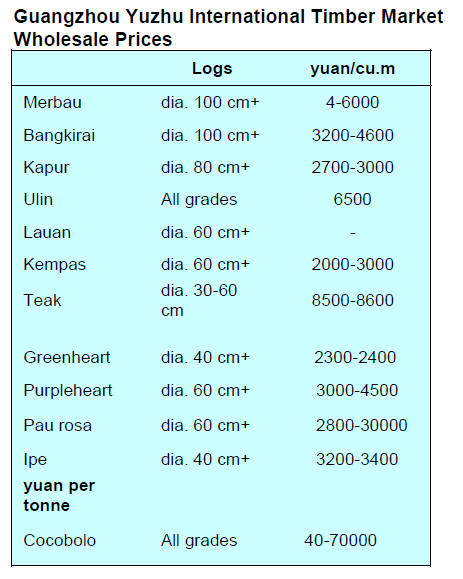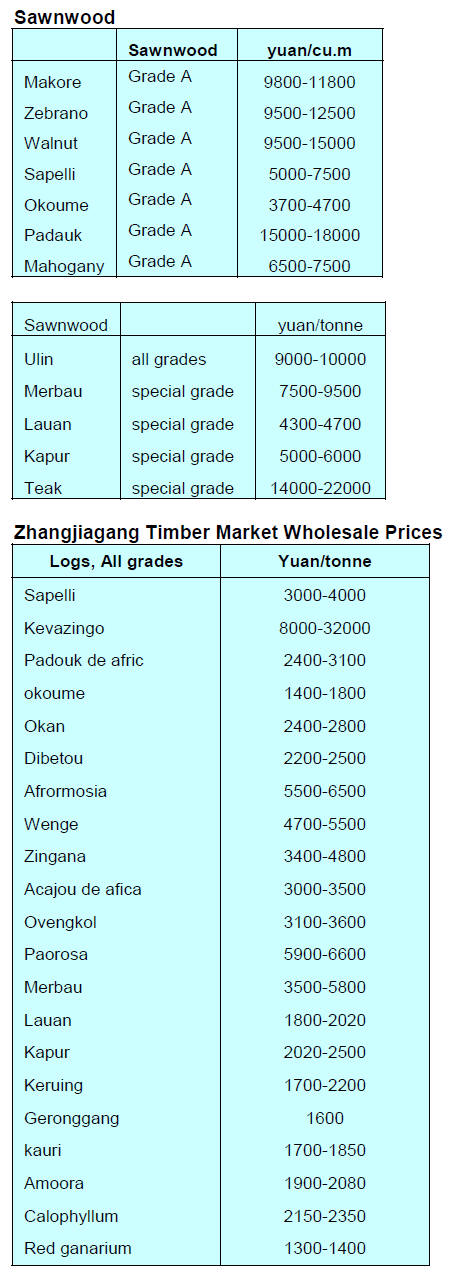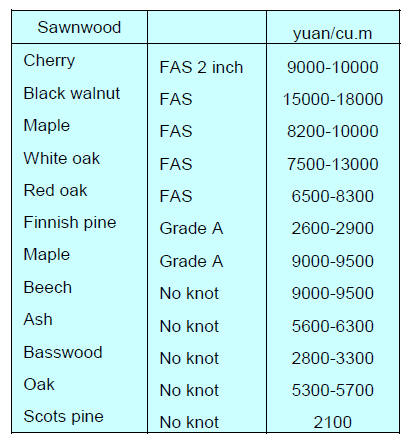US Dollar Exchange Rates of 10th March
2018
China Yuan 6.2835
Report from China
Ministries merged ¨C a new State forestry and
Grassland Administration
As a result of the most recent national institutional reform
a State Forestry and Grassland Administration (SFGA) has
been established replacing the State Forestry
Administration (SFA).
The main function of SFGA is to supervise and manage
the development, utilisation and protection of forests,
grasslands, wetlands, deserts and flora and fauna
resources. In addition, the new agency will be responsible
for environmental protection and rehabilitation,
afforestation and greening and manage all nature reserves
and national parks.
The SFGA falls under the Ministry of Nature and
Resource and has assumed responsibility for functions that
were previous spread across the Ministries of Land and
Resource, Housing and Urban-Rural Development, Water
Resources, Agriculture and the State Oceanic
Administration.
The establishment of SFGA is aimed at integrating
supervision and management of forest, grassland and
wetland, strengthen the protection of ecological system,
accelerating the establishment of a nature reserve system
within the national park system to guarantee national
ecological security.
See:http://english.forestry.gov.cn/ and
http://www.forestry.gov.cn/main/69/content-1090744.html
Wood products hit by US tariffs
The US Trade Representative has issued a list of products
to which a 25% tariffs will be collected. The list covers
some 1300 products imported into the US from China
valued at about US$50 billion.
Wood products that now attract tariffs include wood
products machinery and furniture parts. Analysts in China
say inclusion of HS84193250, 84412000, 84413000,
84414000, 84418000, 84419000, 84209920, 84399910,
84399950 and parts of seats (94019015) and parts of seats
of cane, osier, bamboo or similar materials (94019025) , as
well as kiln dried wood (84193210) is of great concern.
In retaliation China unveiled a list of products imported
from the United States for a possible additional tariff of
25% just hours after the United States released its list of
Chinese products subject to an additional 25 percent tariff.
The list of products, defined by 8-digit subheadings of the
Harmonized Tariff Schedule of the United States (HTSUS), can
be found at:
https://ustr.gov/sites/default/files/files/Press/Releases/301FRN.pdf).
See also:
http://news.ifeng.com/a/20180404/57303903_0.shtml
Standard for built-in made wooden furniture
A standard for custom made wooden furniture built into
new homes has been released and implemented in
Shanghai.
The standard addresses the link between house building
and built-in furniture and aims to protect consumers by
ensuring consistency between design and finished
products.
The formulation and implementation of the standard fills a
gap in the process of home building with built-in furniture
and provides a legal basis for protecting the rights and
interests of consumers as well as setting a standard for
promoting safety in the home.
The standard address control of harmful emission and
introduces the concept of total quantity control from
design stage.
China¡¯s furniture imports at a record high
According to the China National Furniture Association the
value of China¡¯s furniture imports in 2017 rose 16% to
US$3.052 billion, a record high for the past ten years. The
cities accounting for the highest level of consumption of
imported furniture were Shanghai, Guangdong, Beijing,
Jiangsu and Tianjin.
The value of furniture imports through Shanghai and
Guangdong grew 35% and 17% respectively and these two
account for over 50% of total national furniture imports.
Analysts write that the driving force behind the rise in
furniture imports was the significant growthin domestic
furniture production costs. Prices for all inputs into
furniture such as timber, steel, foam, leather, adhesives
and hardware are continuing to rise. For example prices
for foam skyrocketed 70% and prices for leather jumped
30% in 2017. Furthermore, logistic and labour costs have
increased sharply and the recently introduced
environmental protection regulations have pushed up
production costs.
Analysts expect China¡¯s furniture imports will continue to
increase over the coming years and note that the pace
growth of furniture imports is higher than that of furniture
exports.
China¡¯s furniture industry continues to grow at a relatively
high level in terms of domestic production. There were
about 6,000 major furniture manufacturing enterprises in
2017, an increase of 439 compared with the previous year.
The turnover of the top furniture manufacturing
enterprises in 2017 topped RMB906 billion.
At present, Chinese furniture products are still in the
middle and low end of the value chain in the international
markets.
The government and associations aim to nurture a number
of outstanding enterprises with international influence,
create a number of internationally recognised industry
enterprises, further enhance the influence and
competitiveness of the furniture industry and consolidate
and improve its position in the international arena.
Compared with well-known furniture brands in Europe
and the United States there is not a furniture brand in
China that is recognised worldwide.
Quarantine imported logs from Japan
According to Zhejiang Entry-Exit Inspection and
Quarantine Bureau, 11 insects pests have been found in
logs imported from Japan through Huzhou Port. One adult
species of Agrilus genus and 3 adult longhorns have been
found. These have been identified as Agrilus spinipennis,
Semanotus japonicas, Callidiellum rufipenne and
Semanotus bifasciatus. This is the first time Agrilus
spinipennis and Semanotus japonicas have been found in
the country.
These four insects are important tree stem borers and all
have potential hosts in China as the environment is similar
to their original habitat. The authorities fear that if the
spread they can be easily colonise in China. The batch of
imported logs has been treated to prevent the spread of
these potential pests.



|